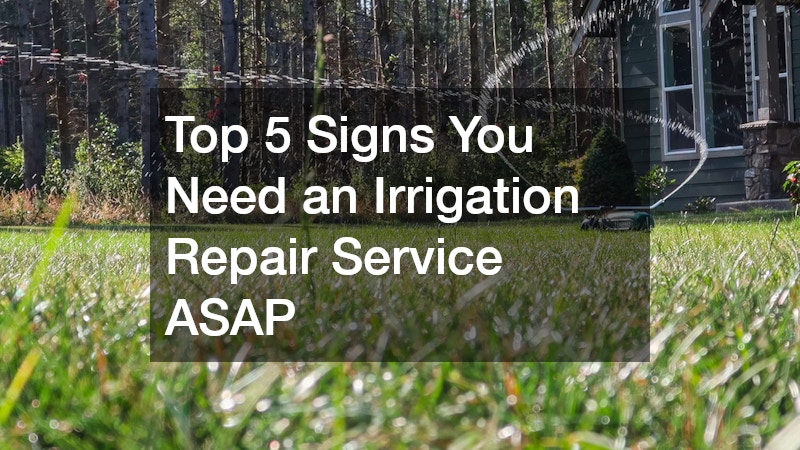
As the guardian of your sanctuary, protecting it takes center stage. There are numerous ways you can deploy to enhance the safety, security, and longevity of your cherished home. From removing clogs to fencing and flooring upgrades, these small construction projects and tasks can fortify your home, empowering you to safeguard it against common issues and potential hazards. With proper expert guidance and involvement, you can protect your home with minimal disruptions to your routines and livelihood. Read along to learn more about these projects and how they can help protect your lovely home.
Ensuring Smooth Drainage Effectively Tackling Clogs
Dealing with clogged drains is inconvenient and can lead to potential water damage and costly repairs if left unaddressed. To ensure smooth drainage in your home, it’s crucial to tackle clogs both quickly and effectively. You can use drain cleaning solutions, enzyme-based cleaners, or natural remedies like baking soda and vinegar to keep your drains flowing freely. You should avoid using harsh chemicals that can potentially damage your pipes.
You can also prevent debris, hair, and other materials from entering your drains by installing drain screens or guards. These simple devices can significantly reduce the chances of clogs forming in your sinks, showers, and bathtub drains. In the kitchen, place mesh strainers over sink drains to catch food particles and prevent them from clogging the pipes. Remember to empty the filters regularly to maintain smooth drainage.
If you encounter persistent clogs or notice slow drainage throughout your home, it may indicate a more significant underlying issue. It’s best to seek professional assistance from a drain cleaning service in such cases. Effectively tackling clogs helps prevent inconvenient backups and foul odors and protects your home from potential water damage. Uphold proper clogs management through these small construction projects and maintenance routines to keep your drains running smoothly.
Protecting Your Home’s Foundation Through Proper Water Flow

Managing water flow around your home is crucial in protecting its foundation from water damage. Properly functioning gutters are key in preventing water from pooling around the base of your home, which can lead to foundation issues and basement flooding. To ensure your gutters function optimally, clean them at least twice a year, especially during the spring and fall when leaves and debris are more likely to accumulate.
In addition to regular maintenance, ensure your gutters are properly installed and pitched towards the downspouts. Consider replacing traditional downspouts with rain chains to add an aesthetic touch while guiding rainwater from the gutters. Rain chains can help control water flow and prevent soil erosion in specific spots around your home.
You should also install permeable pavers in driveways, walkways, or patios. These pavers allow water to infiltrate the ground, reducing runoff and managing water flow more effectively. Select from permeable paver types like permeable concrete, porous asphalt, or permeable interlocking concrete pavers and install them in the desired pattern. Be sure to leave gaps between them to allow water infiltration.
Taking on these small construction projects and investing in proper water flow around your home will help protect your property during heavy rainfall. By safeguarding your home’s foundation, you can prevent costly repairs and ensure your property’s long-term stability and value.
Swift Action to Plumbing Issues
Plumbing issues can arise unexpectedly and cause significant disruption and damage to your home. From burst pipes and leaks to clogged drains and water heater malfunctions, plumbing problems require swift action to minimize the impact on your property. Consider investing in modern plumbing technology to protect your home. For instance, installing water leak detection systems can provide early warnings of leaks and water damage, allowing you to take swift action and prevent costly repairs.
Inspect visible pipes regularly, checking for water stains or discoloration on walls and ceilings. In addition, monitor your water bill for any unexpected spikes, which could indicate a hidden leak. Undetected leaks can cause water damage, mold growth, and structural issues over time.
When faced with a plumbing emergency, involving an emergency plumber for a timely and effective repair is essential. Trying to fix a severe plumbing problem on your own may lead to further damage and exacerbate the issue. Ensure you promptly address even less urgent plumbing concerns, such as slow drains or dripping faucets. These seemingly minor issues can worsen, leading to water waste, increased utility bills, and potential water damage.
Preserving Comfort and Efficiency with Professional Equipment Maintenance

Maintaining your home’s equipment, such as your HVAC system, is crucial for preserving safety and comfort. Your HVAC system plays a significant role in regulating your home’s temperature and air quality. Proper maintenance ensures optimal performance, extends the lifespan of your equipment, and helps you avoid unexpected breakdowns.
Consider constructing an enclosure or shed around the outdoor HVAC unit to protect it from extreme weather conditions, such as heavy rain or snow. Ensure the enclosure allows sufficient airflow for effective operation while shielding the equipment from the elements. In addition, you can improve your equipment’s longevity by properly insulating your home.
A well-insulated home reduces the workload on your HVAC system by maintaining a consistent indoor temperature. Seal any gaps or cracks in windows and doors to prevent drafts, and consider insulating the attic and walls to improve energy efficiency further. These small construction projects can preserve the comfort of your home and reduce energy waste.
Ensure you promptly address any signs of trouble for a well-functioning system. Unusual noises, inconsistent heating or cooling, or a sudden increase in energy consumption may indicate a problem with your HVAC system. Contact a reputable HVAC company to diagnose and resolve the issue before it escalates, preventing further damage and costly repairs.
Finding Enhancing Comfort and Durability with the Right Flooring
The flooring in your home plays a significant role in aesthetics and functionality. When considering a flooring upgrade, it’s essential to find the right option that not only enhances the beauty of your space but also provides comfort and durability for years to come.
During the upgrade, assess the purpose of each room and the level of foot traffic it receives, to have a clearer picture of what it needs. High-traffic areas like entryways, hallways, and living rooms may benefit from durable flooring options like hardwood, laminate, or tile. You can prioritize comfort in bedrooms and personal spaces by installing carpet or luxury vinyl flooring. Collaborate with a carpet contractor to help bring out the best of your low-traffic areas.
Consider the different materials’ suitability for your needs and budget. Hardwood flooring adds timeless elegance and warmth to any space, while laminate flooring offers durability and versatility at a more affordable price point. Tile is an excellent choice for moisture-prone areas, such as bathrooms and kitchens. Luxury vinyl flooring, on the other hand, provides the look of natural materials with added durability and resistance to wear and tear. By carefully considering these factors, you can find the right flooring solution that enhances the comfort, durability, and safety of your home.
Enhancing Functionality and Safety with Upgraded Features

When upgrading features in your home, hiring professional electricians can help enhance functionality and improve safety. Electrical upgrades modernize your home, ensure it meets current safety standards, and accommodate your evolving needs.
If your home has outdated or inadequate wiring, consider hiring electricians to assess and upgrade your electrical system. It may involve replacing old aluminum or knob-and-tube wiring with modern copper wiring to improve safety and prevent fire hazards. Panel upgrades may also be necessary to accommodate increased electrical loads and ensure your home can handle the demands of modern appliances and electronics.
Additionally, you can protect your valuable electronics and appliances from power surges by installing surge protectors throughout your home. Whole-house surge protection systems provide comprehensive protection against power spikes and electrical surges. By upgrading electrical features through these small construction projects and tasks, you can enhance functionality, improve energy efficiency, and ensure the safety of your electrical system.
Creating Secure Heating Connections
If you use propane for heating, cooking, or other household needs, securing reliable propane refill services is essential. Propane is a flammable gas, so safety should be a top priority when choosing a propane refill service. Inquire about the provider’s emergency response procedures in case of leaks or other propane-related incidents to gauge their suitability.
To ensure safe and secure propane usage, you can build a sturdy and well-ventilated enclosure for your propane tank. Construct the enclosure away from potential hazards and shield it from extreme weather conditions. Properly securing the propane tank will help prevent accidental damage and protect it from external elements.
Consider investing in a gas leak detection system to monitor propane levels and alert you in case of leaks. The system will provide early warning, enabling you to act quickly to prevent potential dangers. You can install an emergency shut-off valve near your propane tank and main gas supply line for a more protected connection. This valve will allow you to quickly and safely shut off the propane flow in case of emergencies or gas leaks.
Also, ensure that all your indoor propane-powered appliances, such as heaters and stoves, have proper ventilation. Well-ventilated areas reduce the risk of carbon monoxide buildup and improve indoor air quality. By adequately addressing all propane home usage concerns through these small construction projects and safety measures, you can create a secure environment for your family, by protecting your property from potential hazards.
Enhancing Your Home Security Through Reliable Fencing

A well-designed and properly installed fence can be valuable when protecting your home and ensuring your family’s safety. As such, opting for a fence type that prioritizes security is essential. Fences with minimal gaps, such as solid wood, vinyl, or metal, are more difficult to breach, therefore, a better choice. Choose fences with vertical boards or panels to reduce footholds for potential intruders, and avoid chain-link fences that can be easily climbed.
You can also install a fence at least 6 feet tall to deter unauthorized entry. A taller fence makes it challenging for intruders to climb over and provides an added layer of security. Add no-climb measures on the fence, such as adding finials or pointy caps, to make it harder for intruders to scale the fence. A lockable gate can also be a crucial addition to your fence design, and ensure the gate is sturdy and the lock is of high quality. A well-secured gate is a primary access point to your property, preventing unauthorized entry.
Be sure to collaborate with reliable fence companies to keep your fence in good condition through regular maintenance. They can help you select the right materials and design for your fence and guide you through small construction projects to ensure it is properly installed and maintained. A well-chosen fence adds value and curb appeal to your home while providing a sense of seclusion and protection.
Protect Your Exterior with a Healthy Roof
Your home’s roof is crucial in protecting your exterior from the elements, making it essential to focus on when safeguarding your home. Roof penetrations are some of the major weaknesses that can lead to damage if not well addressed. Ensure your roof penetration areas, such as vents, chimneys, or skylights, are properly sealed to prevent water from seeping into your home and help maintain the integrity of your roof. You can use roofing cement or silicone sealant to seal around these areas.
You should also check flashing around the penetration areas for any signs of wear or damage. Loose or damaged flashing can lead to leaks and water damage. You can opt for roofing cement or replace the flashing depending on the level of damage to maintain a watertight seal.
Also, pay attention to your roof’s ventilation to preserve the health of your roof and your home’s energy efficiency. Consider installing ridge vents, soffit vents, or attic fans to improve airflow and prevent moisture buildup in the attic. Adequate ventilation can help regulate the temperature of your roof, reducing the risk of shingle deterioration and ice dams in colder climates.
To maintain your roof’s health, ensure you work with reputable roofing services for thorough inspection at least once a year, preferably in the spring or fall. During the inspection, the contractor will check for loose or damaged shingles, signs of leaks, and any other issues that need attention. This proactive approach lets you address potential problems early through small construction projects that you can easily manage, ensuring your roof’s long-term protection and integrity.
Strengthen Your Property with Effective Sea Wall Maintenance
Living in coastal areas or near bodies of water comes with the responsibility of protecting your property from erosion and water damage. To prevent erosion and reinforce the base of your sea wall, consider adding protective materials such as riprap or geotextiles. These materials act as a barrier against soil erosion and help maintain the stability of the sea wall.
You should also ensure that your sea wall has effective drainage systems to manage water flow. Clear any obstructions that hinder proper water management and redirect water away from the structure to minimize erosion risk. Regularly inspect your sea wall for any damage. Work with reputable sea wall repair services to thoroughly assess and evaluate your existing sea wall. Professionals will guide you on effective ways to repair these damages to maintain the structural integrity of your sea wall.
Installing storm shutters protects your windows from high winds and flying debris during storms. These shutters provide an additional layer of defense, reducing the risk of shattered windows and water infiltration into your home. You can also apply waterproofing sealants to your home’s foundation to prevent water infiltration. These small construction projects can go far in maintaining the safety and functionality of your home for a long time.
Invest in Improving Your Home’s Protection and Quality
You can protect your home from potential hazards and maintain its integrity by undertaking these small construction projects and tasks. Each project contributes to your home’s safety, security, and longevity, making your home a more comfortable sanctuary for you and your loved ones. Implement them in your home, and enjoy the convenience of a well-secured home. Remember to engage professionals in skill-demanding tasks such as plumbing, HVAC maintenance, and electrical work for more secure connections.


